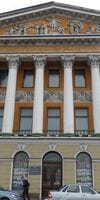The Rumyantsev Mansion is a historical building in St. Petersburg, which belonged to Count N. P. Rumyantsev, and was one of the centers of the cultural life of the city.
Today, a museum with permanent exhibitions operates within the walls of the former mansion. There are excursions around the mansion, temporary exhibitions, seminars, festivals, lectures, events for children, etc.
The building is also known as the house of N. P. Rumyantsev and the house of E. L. Kochubey-after the names of the owners.
The Rumyantsev mansion is located in the center of St. Petersburg, on the English Embankment (the Neva River).
The facade of the mansion, facing the English Embankment, is one of the most striking architectural creations of the Neva embankments.

The construction of the building was carried out in 1730-1740, and various reconstructions took place until the end of the 20th century.
During its history, the mansion has changed several owners, the first of whom were the princes Galitsyns. In 1802, the house was acquired by Count Nikolai Petrovich Rumyantsev, who over the years of owning the building, turned it from a modest house into a ceremonial mansion; significant work on giving the mansion a luxurious appearance was carried out by architect Vasily Alekseevich Glinko.
Rumyantsev was fond of and collected his collection. The count's living quarters were located in three rooms with windows on the Neva River, and in the other rooms of the mansion there were his priceless treasures.
In 1826, N. P. Rumyantsev died, leaving an oral instruction to his younger brother, Sergei Petrovich, to provide a house on the English Embankment with all the collections in it for a museum, "for good enlightenment". To meet the wishes of his brother, Sergey Petrovich carried out internal alterations in the house, with the aim of converting the mansion into a museum.
In 1831, the first private public museum in Russia was opened in the mansion. In 1861, the Rumyantsev Museum was moved to Moscow and later its collections formed the basis of the collection of the Russian State Library and the Pushkin Museum of Fine Arts.
The mansion in St. Petersburg passed from one owner to another, as a private property, in which alterations took place. Including from 1893 to 1916, the house was owned by the Kochubeyev family (hence the second name of the mansion).
By the 300th anniversary of St. Petersburg, the restoration of the historical interiors of the mansion, made in the 1880s by the architect A. A. Stepanov, was completed.
Currently, the Rumyantsev mansion is an architectural monument of the 18th century. The expositions of the State Museum of the History of St. Petersburg are located in its internal premises.
The building is designed in the classical style. The main facade, facing the Promenade des Anglais, is decorated with a powerful portico at the level of the second and third floors, which consists of 12 columns with capitals of the Corinthian Order. The windows and the entrance of the first floor are made in the form of large arches.

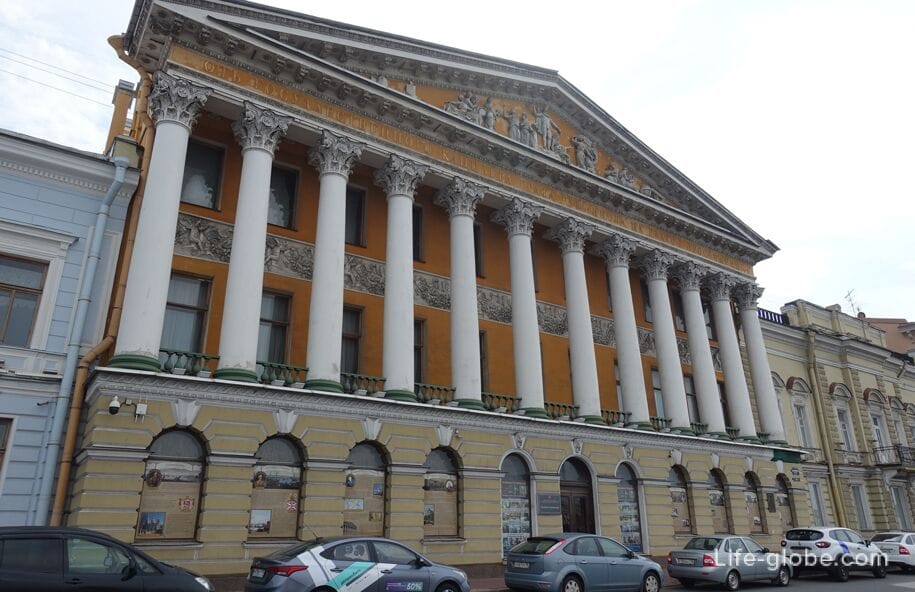
The mansion of Rumyantsev is crowned by a pediment, in the tympanum of which there is a high relief depicting the composition "Apollo-Musaget on Parnassus surrounded by nine Muses and their mother Mnemosyne"; on the sides of the composition there are attributes of sciences and arts (originally created by the sculptor I. P. Martosov).
A restored historical inscription is placed on the facade of the mansion: "FROM THE STATE CHANCELLOR RUMYANTSEV TO THE GOOD ENLIGHTENMENT."
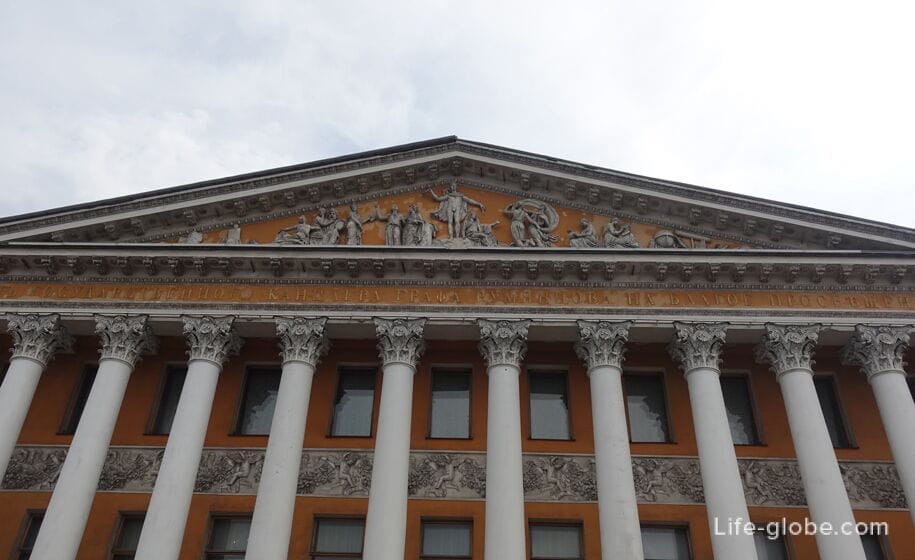
The museum in the Rumyantsev mansion
There are now permanent expositions in the historical halls and rooms of the mansion:
1. " Rumyantsev's Mansion. The history of the building and its owners", which presents materials on the history of the house from the first owners to the return of the building to the status of a museum.
2. "Leningrad during the Great Patriotic War", which shows the main events related to the heroic defense and life of the city in 1941-1945. The exhibition occupies 12 halls and includes more than 2000 exhibits: original documents and photographs, banners, weapons and uniforms, items of blockade life, personal belongings of participants of the events, paintings and graphics, dioramas, schematic maps, layouts and models.
3. "NEP. The image of the city and man", which tells about the period of the new economic policy of the 20th century (1921-1929) - a bright stage in the history of Petrograd-Leningrad. The exhibition presents authentic household items, furniture, clothes of the 1920s, books, periodicals, photographs, etc. Interactive exhibition areas: "Nevsky Prospekt", "Shoemaker's Workshop", "Milliner's Atelier", "Restaurant", "Living room" and "Communal kitchen".
4. "From weekdays to holidays. Etudes from the 1930s", which introduces the period of the formation of socialist industry and the daily life of Leningrad in the 1930s. During these years, the celebration of the new year is resumed, recreation parks appear, sports and a healthy lifestyle are promoted. The exhibition presents: sketches of decorating the streets and squares of Leningrad, personal belongings of outstanding figures of science and art, photographs and samples of products produced by factories and enterprises of the city.
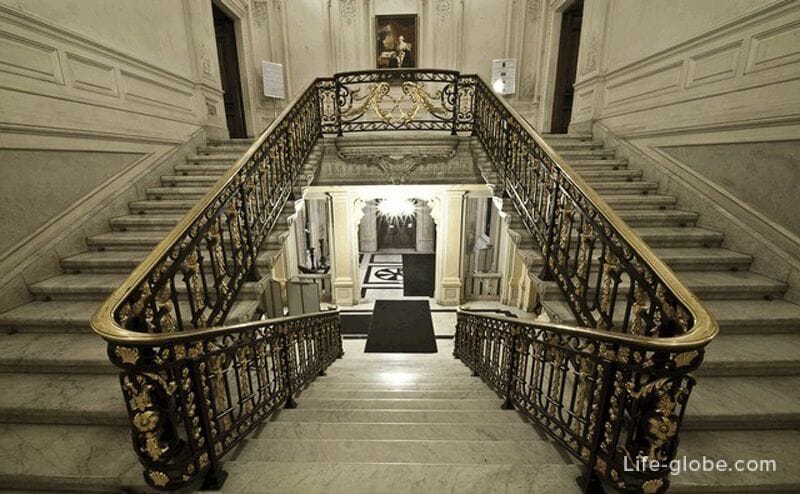
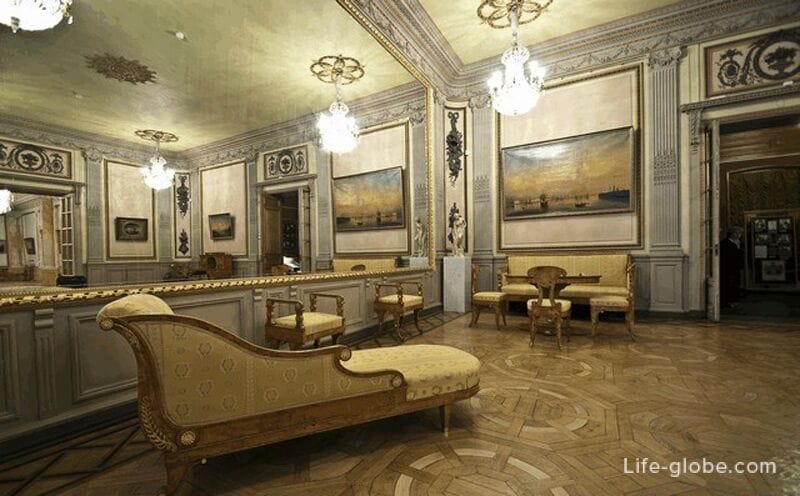
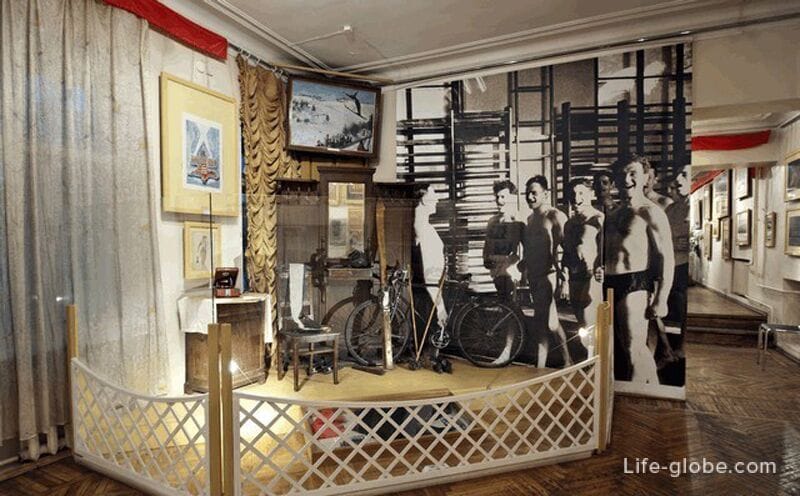
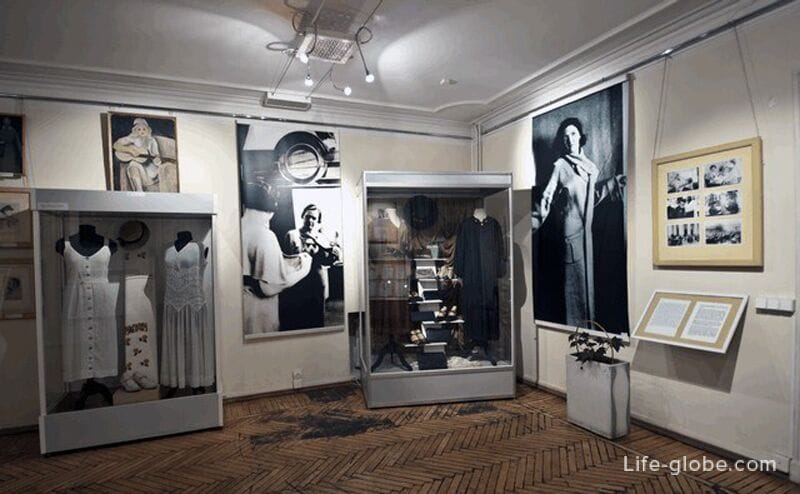

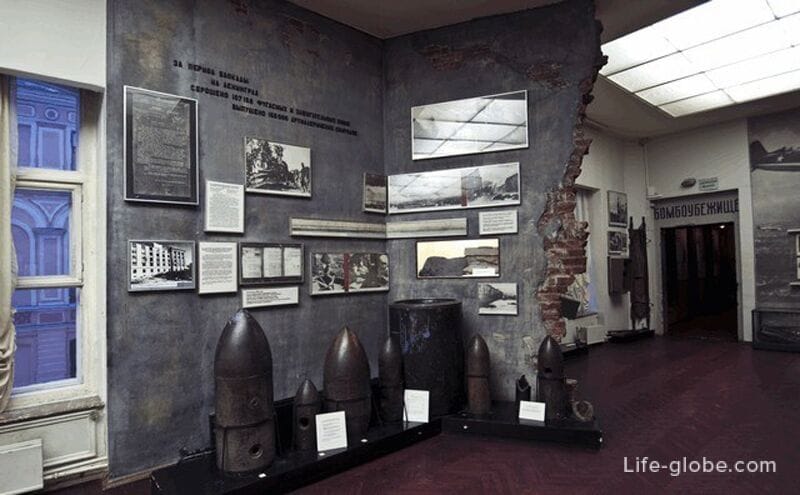
5. "Communal paradise, or involuntary relatives". The exhibition is open in the premises of a former communal apartment, which has retained its original layout: in four rooms, a narrow corridor and a shared kitchen.
In the shared kitchen there is a retrospective of household appliances: a primus, a gas stove, a refrigerator table, an electric refrigerator; a galvanized hand wash, etc.
In the corridor there are radios, electric shavers, hair dryers, wall phones, bells, vacuum cleaners and other "things from the past".
The exhibition also shows fragments of feature films and documentaries, which show the everyday life of Leningrad "communal apartments".

Entrance to the listed expositions ( exhibition) is by a single ticket to visit the Rumyantsev Mansion.
There are guided tours of the Rumyantsev Mansion Museum (paid separately).
Temporary exhibitions, seminars, festivals, lectures, events for children, meetings, creative evenings, etc. are held within the walls of the former mansion.
In addition to the above, the building has an information and exhibition center of D. S. Likhachev (entrance from Galernaya Street, 45), where a memorial exposition is presented dedicated to the main stages of the life and work of Dmitry Sergeevich Likhachev - an outstanding scholar-philologist, historian of Russian literature, public figure, defender of the country's cultural values and a city defender who did a lot to preserve historical St. Petersburg.
The Rumyantsev mansion has a courtyard that can be used for organizing various events.
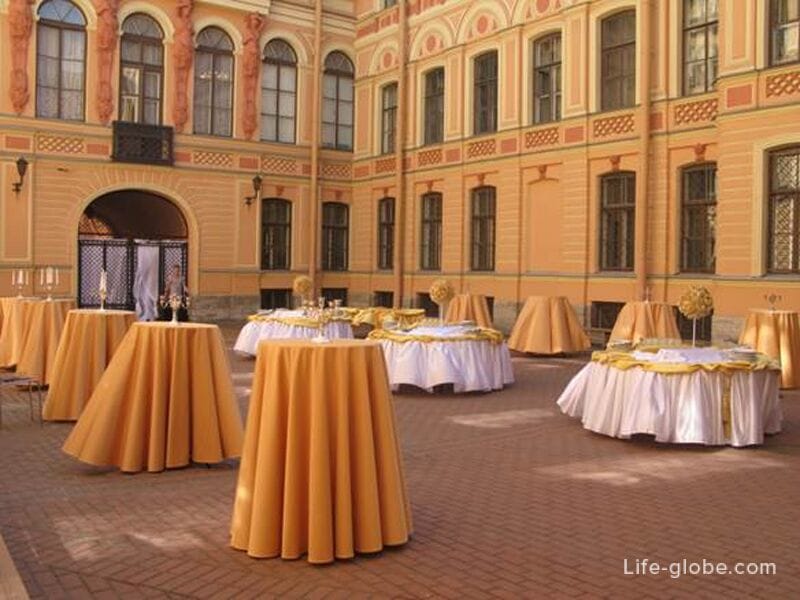
Practical information
The Rumyantsev Mansion is located in the historical center of St. Petersburg, at the address: English Embankment, 44.
Nearest metro stations: "Sennaya Ploshchad", "Sadovaya", "Spasskaya", "Admiralteiskaya" and "Vasileostrovskaya".
Tickets to the Rumyantsev Mansion Museum can be purchased at the ticket offices of the building.
The museum in the Rumyantsev Mansion is a branch of the State Museum of the History of St. Petersburg, the main museums of which are located in Peter and Paul Fortress of St. Petersburg.
We recommend that you check all information about opening hours, the cost and purchase of tickets, expositions, excursions, temporary exhibitions, as well as other events in the mansion on the official website of the museum: spbmuseum.
All accommodation facilities in St. Petersburg, including in the city center and more remotely from it, can be viewed and booked here




